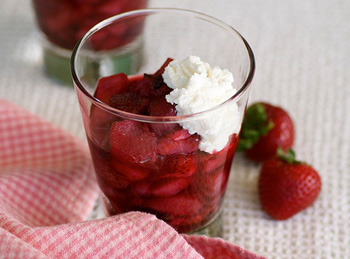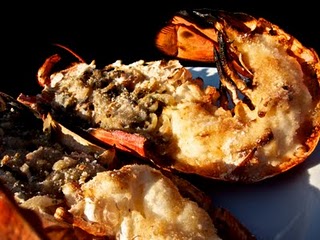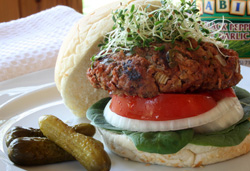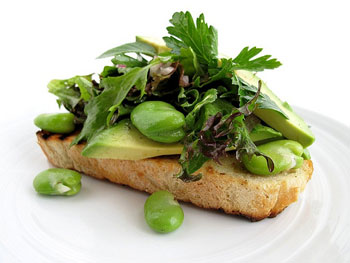 When I was a kid, rhubarb season was usually a couple of months long. You didn't have to buy it at the market because half of your neighbors grew it in their yards.
When I was a kid, rhubarb season was usually a couple of months long. You didn't have to buy it at the market because half of your neighbors grew it in their yards.
I remember going to my great aunt's house where those crimson stalks stood at attention along the side of her house. I'd rip one right of the ground and bite into it like it was a carrot. I'd do it till my eyes watered, my lips went numb, and my belly turned sour. Ah, those were good days.
Since my belly isn't as steely as it used to be, I forego raw rhubarb for stewed, sweetened dishes like crumbles, crisps, and compotes. I have made many rhubarb compotes, but this one is special. The rhubarb is tempered by sugar and enhanced by freshly squeezed orange juice, aromatic ginger, and sweet blueberries.

 Because our house and backyard are shaded by three large trees, we make it through summer's hottest days without air conditioning. It helps that a cooling ocean breeze comes our way in the afternoon. Eating outside on the deck is a great way to beat the heat. Easy-to-make dishes, relying heavily on salads and grilled vegetables, fish and meat are the way to go. No need to suffer inside in front of the stove when there's a barbecue outside.
Because our house and backyard are shaded by three large trees, we make it through summer's hottest days without air conditioning. It helps that a cooling ocean breeze comes our way in the afternoon. Eating outside on the deck is a great way to beat the heat. Easy-to-make dishes, relying heavily on salads and grilled vegetables, fish and meat are the way to go. No need to suffer inside in front of the stove when there's a barbecue outside. It is only right that during International Pickle Week we should all eat at least one pickle. You're probably thinking, "National Pickle Week?" Yep. It's true. International Pickle Week was founded more than 60 years ago by the Pickle Packers International, a trade association serving the pickling industry.
It is only right that during International Pickle Week we should all eat at least one pickle. You're probably thinking, "National Pickle Week?" Yep. It's true. International Pickle Week was founded more than 60 years ago by the Pickle Packers International, a trade association serving the pickling industry. Homemade ice cream is a great tradition for the Fourth of July. Undoubtedly it hits the spot on a hot summer day. And we all know store bought ice cream is nothing compared to homemade.
Homemade ice cream is a great tradition for the Fourth of July. Undoubtedly it hits the spot on a hot summer day. And we all know store bought ice cream is nothing compared to homemade. Since eating fava beans for the first time last year, I've come to love the legume as much as the bean-eating crowd. Italians love their beans and Tuscans in particular are known as
Since eating fava beans for the first time last year, I've come to love the legume as much as the bean-eating crowd. Italians love their beans and Tuscans in particular are known as 
